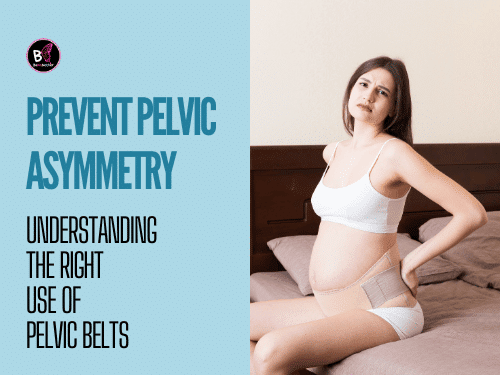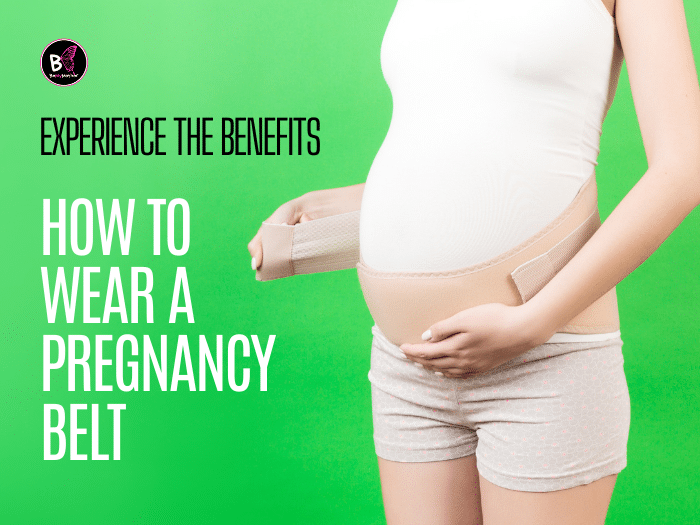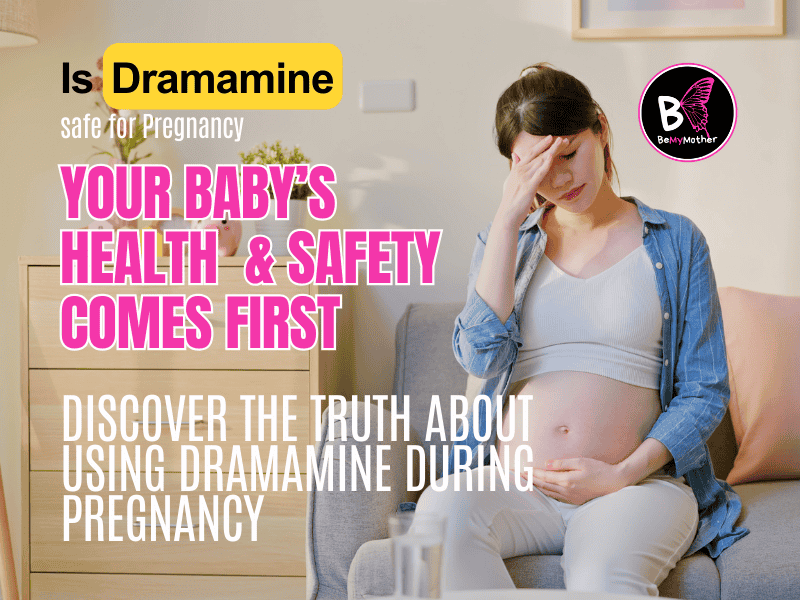Pregnancy is a beautiful journey, but it comes with physical challenges, such as back pain, pelvic discomfort, and posture issues. A pregnancy belt can be a lifesaver, providing the support you need during daily activities. Wondering how to wear a pregnancy belt properly or when to start using one? This comprehensive guide covers everything from step-by-step instructions to choosing the right belt.
1. How to Wear a Pregnancy Belt: A Step-by-Step Guide
Wearing a pregnancy belt correctly is essential for effective support and comfort. Follow these steps:
- Position the Belt: Place it below your belly, just above your pubic bone, and around your hips.
- Secure the Belt: Fasten it snugly, ensuring it’s tight enough to provide support but not so tight that it restricts movement or circulation.
- Adjust as Needed: Ensure the belt doesn’t dig into your skin or shift while walking or sitting.
- Check Alignment: The belt should support your lower back and evenly distribute the weight of your belly.
💡 Related Article: Struggling to get comfortable during pregnancy? Discover when to support your sleep routine in When Should You Start Using a Pregnancy Pillow? Avoid Discomfort with 11 Crucial Insights for Every Expectant Mom. Make rest a priority.
2. When Should You Start Wearing a Pregnancy Belt?
Most women wear a pregnancy belt during the second or third trimester when the baby bump becomes more pronounced and back pain or pelvic discomfort sets in.
Signs You May Need a Pregnancy Belt:
- Persistent lower back pain.
- Pelvic pressure or discomfort.
- Difficulty maintaining good posture.
💡 Related Article: Want to stay fit while easing strain on your growing bump? Learn how to strengthen safely in Planks During Pregnancy: 10 Expert Tips for Safe and Effective Workouts. Prioritize fitness without compromising your health.
3. Benefits of Wearing a Pregnancy Belt

Pregnancy belts are designed to provide targeted support and relief. Key benefits include:
- Reduced Back Pain: Supports the lower back by redistributing the weight of your belly.
- Pelvic Support: Alleviates pressure on the pelvic area.
- Improved Posture: Encourages proper alignment, reducing strain on the spine.
- Ease During Activities: Helps you move more comfortably during daily tasks.
🔍 Research Insight: A study published in the Journal of Clinical Nursing concluded that wearing maternity support garments during pregnancy can alleviate low back pain and pelvic girdle pain, improves functionality and mobility, and reduces the risk of falls.
Source: PubMed
4. Types of Pregnancy Belts: Choosing the Right One for You
There are several types of pregnancy belts available, each catering to different needs:
| Type of Belt | Best For |
| Simple Support Belt | Lightweight support for mild discomfort. |
| Full Prenatal Cradle | Comprehensive back and belly support. |
| Pelvic Support Belt | Targeted relief for pelvic pain. |
| Adjustable Velcro Belts | Versatile fit for growing bumps. |
🔍 Research Insight: Research from BMC Pregnancy and Childbirth suggests that flexible pelvic support belts may be more effective in reducing pain and are potentially better tolerated than rigid belts.
Source: PMC
5. How Long Can You Wear a Pregnancy Belt Each Day?
While pregnancy belts are helpful, they must be used in moderation. Experts recommend wearing one for 2-3 hours at a time, with breaks in between. Prolonged use can lead to overdependence, muscle weakening, or discomfort.
🔍 Research Insight: A study in the Journal of Physical Therapy Science found that continuous and extended use of pelvic belts during and after pregnancy might be related to modifications of pelvic asymmetry. Therefore, proper guidance on the duration and correct usage of pelvic belts is essential.
Source: PMC
6. Tips for Wearing a Pregnancy Belt Comfortably
How to wear the Baby belly band maternity support belt for back, belly and hip support
To ensure maximum comfort and effectiveness:
- Adjust the Fit: Ensure the belt is snug but not restrictive.
- Pair with Comfortable Clothing: Wear the belt over soft, breathable fabrics to prevent irritation.
- Check Your Posture: Maintain a neutral spine while wearing the belt.
- Take Breaks: Remove the belt every few hours to allow your body to move naturally.
💡 Related Article: Experiencing aching feet during pregnancy? Discover proven solutions for relief in How to Relieve Foot Pain During Pregnancy? 9 Proven Tips Every Mom-to-Be Should Know. Step into comfort and ease.
7. Common Mistakes to Avoid When Wearing a Pregnancy Belt
Improper use of a pregnancy belt can reduce its effectiveness or cause discomfort. Avoid these common errors:
- Wearing It Too Tight: This can restrict circulation and irritate the skin.
- Positioning It Too High or Too Low: Incorrect placement reduces support and can worsen discomfort.
- Wearing It for Too Long: Over-reliance can weaken core muscles.
- Neglecting Comfort: Ensure it’s adjusted to fit your growing belly.
8. Can a Pregnancy Belt Be Used After Delivery?

Yes, pregnancy belts can be repurposed postpartum for abdominal and pelvic support. They’re particularly beneficial for:
- Postpartum Recovery: Helps stabilize the abdomen and support the back.
- C-Section Recovery: Reduces pain and provides gentle compression to the surgical site.
- Everyday Activities: Assists with posture and mobility during recovery.
🔍 Research Insight: Evidence indicates that using an abdominal binder after cesarean delivery can decrease feelings of distress and increase mobility, suggesting potential benefits of continued support garment use postpartum.
Source: PMC

Table 1: Types of Pregnancy Belts and Their Features
| Type | Key Features | Ideal For |
| Simple Support Belt | Lightweight, adjustable | Mild back pain, early pregnancy |
| Full Prenatal Cradle | Covers the back, belly, and shoulders | Severe discomfort, third trimester |
| Pelvic Support Belt | Targeted compression around the hips | Pelvic girdle pain |
| Adjustable Velcro Belt | Customizable fit | Changing belly size throughout pregnancy |
Table 2: Dos and Don’ts of Wearing a Pregnancy Belt
| Do | Don’t |
| Adjust the belt for a snug fit | Wear the belt too tight |
| Wear over a soft layer of clothing | Place the belt directly on the skin |
| Take breaks after 2-3 hours of wear | Wear the belt continuously |
| Consult your doctor for specific guidance | Use the belt as a substitute for exercise |
FAQ Section: Addressing Common Concerns
- How to wear a pregnancy belt properly?
Position the belt below your belly, around your hips, and fasten it snugly without compressing the abdomen or restricting movement. - When should I start wearing a pregnancy belt?
You can start using a pregnancy belt in the second trimester or as soon as you experience back pain, pelvic pressure, or posture issues. - Can I wear a pregnancy belt all day?
It’s recommended to wear it for a few hours at a time, with breaks in between, to avoid over-reliance or discomfort. - Do pregnancy belts really help with back pain?
Yes, pregnancy belts are designed to alleviate back pain by redistributing the weight of your belly and supporting your lower back. - Can I sleep while wearing a pregnancy belt?
No, pregnancy belts are not designed for sleeping. Consider using a pregnancy pillow for nighttime support instead. - What are the side effects of wearing a pregnancy belt?
If worn too tightly or for too long, a pregnancy belt may cause discomfort, skin irritation, or restrict circulation. Always follow usage instructions. - Can I use a pregnancy belt postpartum?
Yes, pregnancy belts can be used after delivery for abdominal support and to help with posture during recovery. - Are pregnancy belts safe for the baby?
Yes, when worn correctly, pregnancy belts are safe for the baby as they support the mother’s body without applying pressure to the abdomen.
Conclusion
Learning how to wear a pregnancy belt properly can significantly improve your comfort and mobility during pregnancy. Starting in the second trimester, a well-fitted belt can alleviate back pain, support your growing belly, and improve posture. With proper use, a pregnancy belt can also aid postpartum recovery. Always choose the correct belt type for your needs, wear it correctly, and consult your doctor for personalized advice. Embrace the support of a pregnancy belt to enjoy a more comfortable pregnancy journey!
💡 Related Article: Curious about sipping your favorite tea while expecting? Find out the facts in Is Chai Tea Safe During Pregnancy? 8 Unavoidable Facts for a Safe and Healthy Pregnancy. Savor every sip with confidence.



